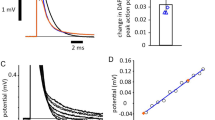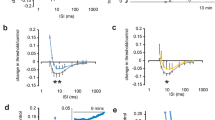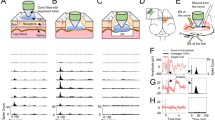Abstract
MANY attempts have been made by the use of various drugs and hormones and by electrical stimulations to influence the rate at which mammalian nerve fibres regenerate after injury. None of these has been successful. It has, however, recently been shown that in poikilothermic animals such as the frog1 and the lizard2, nerve regeneration following upon injury is greatly affected by the temperature of the environment in which the animals are kept.
This is a preview of subscription content, access via your institution
Access options
Subscribe to this journal
Receive 51 print issues and online access
$199.00 per year
only $3.90 per issue
Buy this article
- Purchase on Springer Link
- Instant access to full article PDF
Prices may be subject to local taxes which are calculated during checkout
Similar content being viewed by others
References
Lubinska, L., and Olekiewicz, M., Acta Biol. Exp. Varsovie, 15, 125 (1950).
Gamble, H. J., Goldby, F., and Smith, G. M. R., Nature, 179, 527 (1957).
Dieneka, D., Folia Neurobiol., 2, 13 (1908).
Huggins, C., Blocksom, B. H., and Norman, W. J., Amer. J. Physiol., 115, 395 (1936).
Vizozo, A. D., and Young, J. Z., J. Anat., Lond., 82, 110 (1948).
Barcroft, H., and Edholm, O. G., J. Physiol., 104, 366 (1946).
Author information
Authors and Affiliations
Rights and permissions
About this article
Cite this article
GAMBLE, H. Temperature Effects in Mammalian Nerve Regeneration. Nature 180, 146–147 (1957). https://doi.org/10.1038/180146a0
Issue Date:
DOI: https://doi.org/10.1038/180146a0
This article is cited by
-
Degeneration and regeneration in teased nerve fibres
Acta Neuropathologica (1971)
-
Effect of a Raised Peripheral Temperature upon the Rate of Regeneration in a Mammalian Peripheral Nerve
Nature (1958)
Comments
By submitting a comment you agree to abide by our Terms and Community Guidelines. If you find something abusive or that does not comply with our terms or guidelines please flag it as inappropriate.



